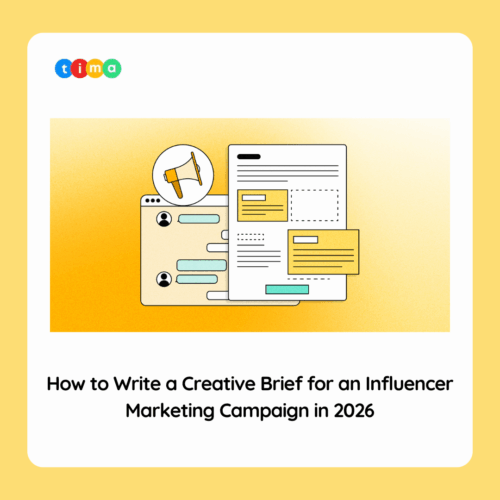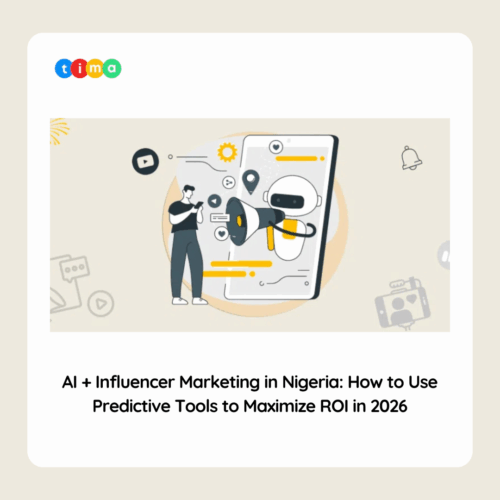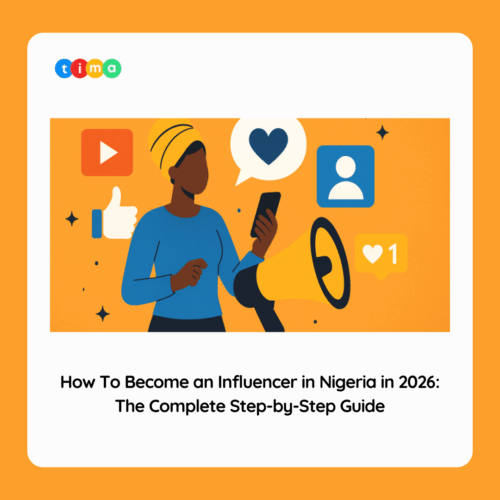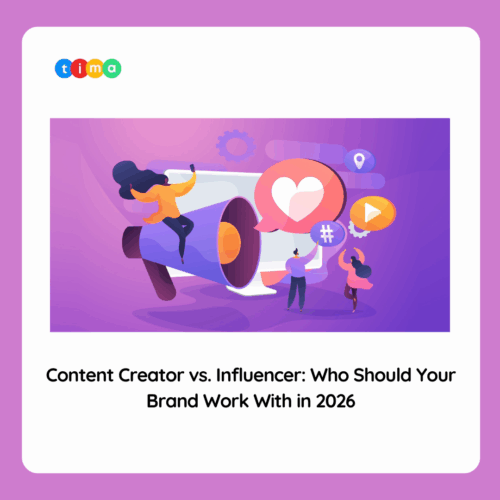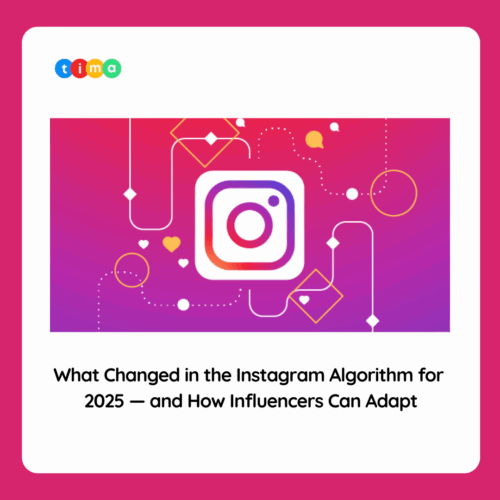In today’s digital-first world, brands are constantly told to “work with influencers” if they want to stay relevant. But over the past few years, another term has been quietly reshaping how brand partnerships are built: creator marketing. Though often used interchangeably, influencer marketing and creator marketing are not the same — and understanding the difference can be the deciding factor between a campaign that makes noise and one that drives lasting impact.
Influencer marketing is built on reach, popularity, and the ability to influence purchase behavior through personality. Creator marketing, on the other hand, is powered by content: storytelling, visuals, and assets that brands can repurpose far beyond a single post.
For brands navigating the digital landscape, knowing when to tap into influence and when to leverage creation is not just a tactical choice — it’s a strategic advantage. TIMA recognizes this shift, and in this article, we’ll break down what every brand needs to know.
What Is Influencer Marketing?
Influencer marketing centers around personalities who have built a following on social platforms. Their value lies in influence — the ability to shape opinions, tastes, and behaviors of their audience. A beauty influencer recommending a skincare product or a travel influencer showcasing a hotel stay works because their followers trust them.
- Key driver: Reach and influence.
- Brand goal: Visibility, awareness, and social proof.
- Primary asset: The influencer’s audience.
What Is Creator Marketing?
Creator marketing, by contrast, isn’t about follower counts — it’s about content. Creators are storytellers, designers, videographers, photographers, or niche experts who produce engaging and original material. Their value lies in producing assets that reflect a brand’s identity and can be used across multiple touchpoints — social media, websites, paid ads, and more.
- Key driver: Content and creativity.
- Brand goal: Scalable, reusable content with authentic storytelling.
- Primary asset: The content itself.
The Core Difference: Influence vs. Creation
At the heart of the distinction is one simple idea:
- Influencers amplify. They put your brand in front of a large, trusting audience.
- Creators build. They produce material that embodies your brand’s message and can live beyond one social media feed.
This difference is more than semantics — it’s strategic. While influencers act as megaphones, creators function as architects of narratives. Brands that understand how to use each approach will be better equipped to run effective campaigns.
The Strengths of Influencer Marketing
Influencer marketing has become a staple for brands, and for good reason. Here are its biggest strengths:
- Massive Reach: Influencers, especially macro and celebrity influencers, offer immediate access to hundreds of thousands or even millions of potential customers.
- Built-In Trust: Audiences trust influencers because they feel like peers. A product recommendation doesn’t feel like an ad — it feels like advice from a friend.
- Social Proof: When well-known figures endorse a brand, it signals credibility. For new brands entering the market, this can shorten the path to customer adoption.
- Speed and Buzz: If your goal is to launch a product with hype, influencers can generate excitement quickly and at scale.
The Strengths of Creator Marketing
Creator marketing, while newer, is growing rapidly — and its strengths align with the evolving needs of brands.
- Evergreen Content: Creators produce material that brands can own and repurpose across websites, ads, emails, and more. The content doesn’t lose value once it’s posted.
- Authentic Storytelling: Creators are often niche experts — from food photographers to TikTok video editors. Their craft allows them to tell stories that resonate deeply with target audiences.
- Flexibility and Control: Brands can negotiate usage rights for creator content, extending its shelf life and value beyond one-time collaborations.
- Cost-Effective Production: Instead of expensive studio shoots, brands can tap into creators who produce high-quality content at a fraction of the cost.
When to Use Each Approach
So how do brands decide between influencers and creators? Here’s a practical guide:
Choose Influencer Marketing If:
- You’re launching a product and need immediate awareness.
- You want to leverage trust from personalities your audience already follows.
- You’re targeting broad demographics or mass-market appeal.
Choose Creator Marketing If:
- You need scalable content for multiple platforms.
- You’re focused on long-term brand building through storytelling.
- You want content you can repurpose for ads, websites, and campaigns.
Best of Both Worlds
In many cases, the strongest campaigns combine both approaches: influencers to create buzz and reach, and creators to supply ongoing, authentic content that deepens the narrative.
The Shift Brands Must Recognize
- From Followers to Creativity: Audiences are becoming more skeptical of pure influence. A single influencer post no longer guarantees engagement. Instead, consumers are drawn to creativity and authenticity, both of which creator marketing offers.
- The Creator Economy Is Growing: According to industry reports, the creator economy is projected to surpass $500 billion by 2030, outpacing traditional influencer growth. Brands investing in creators now are positioning themselves for the future.
- Deeper Engagement Over Vanity Metrics: Likes and follower counts are losing their importance. What matters is content that resonates, inspires, and converts. Creator marketing is uniquely equipped to deliver this.
- Long-Term Partnerships: Where influencer collaborations are often one-off, creator partnerships can evolve into long-term collaborations where creators become integral to a brand’s storytelling strategy.
Case Examples (Hypothetical for Illustration)
- Influencer-Led Campaign: A beverage company partners with a fitness influencer who shares their drink during workouts. The campaign drives immediate sales but fades after a few weeks.
- Creator-Led Campaign: The same beverage company partners with a video creator who produces short-form recipe content featuring the drink. These videos are repurposed into ads, TikTok content, and YouTube shorts — delivering long-term engagement and brand association.
Both work, but one builds momentum while the other sustains it.
The Future: Blended Strategies
The smartest brands are moving away from thinking in silos. Instead of asking “Should we work with influencers or creators?” they’re asking: “How do we build campaigns that leverage both influence and creativity?”
This blended model allows brands to:
- Launch with hype (influencers).
- Sustain with storytelling (creators).
- Repurpose content across owned and paid channels.
- Build both trust and content libraries for the long term.
Conclusion: How TIMA Helps Brands Stay Ahead
The difference between influencer marketing and creator marketing isn’t just terminology — it’s strategy. Brands that fail to recognize this distinction risk wasting budgets on campaigns that generate noise but no lasting value.
At TIMA, we help brands navigate this evolving landscape by:
- Identifying when influencer reach is the right tool.
- Matching brands with creators who produce content that lasts.
- Designing blended campaigns that drive both immediate visibility and long-term growth.
The future belongs to brands that see beyond the hype. Creator marketing is not a replacement for influencer marketing — it’s the evolution of it. And those who adapt now will build the strongest connections with tomorrow’s consumers.


